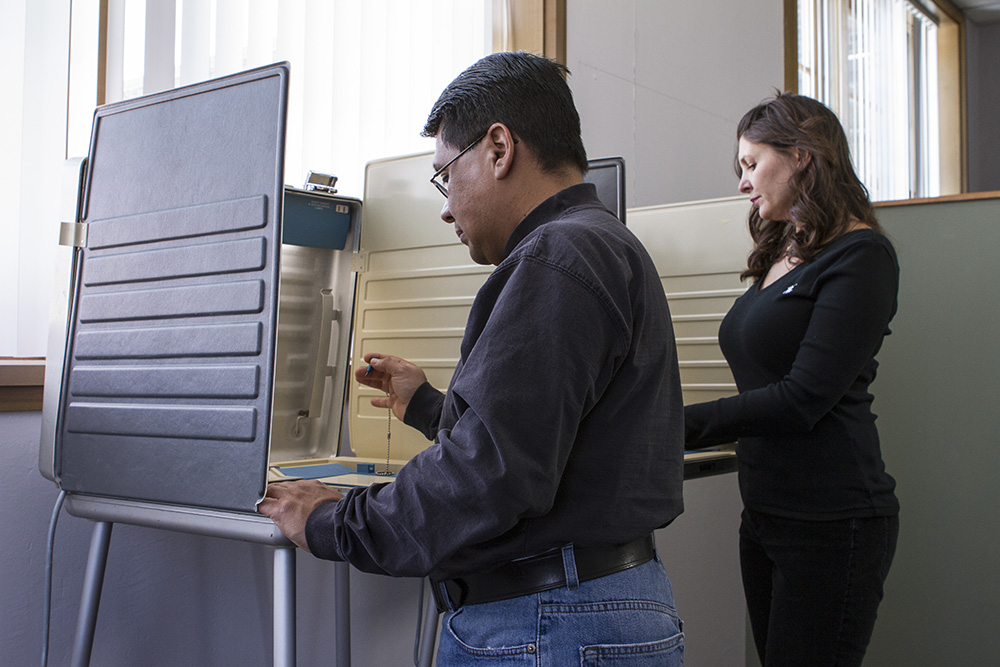How the Preferences of Likely Voters Could Impact the Midterm Elections
Midterm elections - elections in which the Congress is up for election, but the President is not - are generally characterized by two major phenomena: lower turnout and problems for the party of the President. Over the last four decades, voter turnout in midterm elections has averaged only 37% of eligible voters, compared to an average of 53% in Presidential years. Despite the expansion of vote by mail and longer voting periods, midterm election turnout has been remarkably stable, varying between 36% and 39% of eligible voters. In those same 40 years, the party of the President has lost an average of about 21 Congressional seats during midterm elections compared to an average gain of four seats during Presidential election years.
For those looking to influence election outcomes, the ability to understand and target those most likely to vote is of critical importance, and never more so than during the midterms when just over a third of eligible Americans are likely to show up. Simmons Research examined those Americans indicating that they were the most likely to vote as part of our Digital Dynamic National Consumer Survey, an online expansion of our long-running mail survey. Respondents in this study were collected between October 1st and October 3rd, 2018 with a sample of 1,494 (1,231 registered voters) and weighted to the US adult population. The margin of error among registered voters was ± 2.8% and all figures cited are among registered voters unless otherwise indicated.

We asked respondents how likely they were to vote in the US 2018 Midterm elections on a five-point scale from extremely unlikely to extremely likely. Those that answered the top choice, “extremely likely” made up 57% of our sample and 66% of registered voters, which is considerably higher than the number who will show up in the November if historical trends continue. That said, over 80% of respondents in this group indicated that they had voted in at least three of the last four elections compared to just 32% of respondents not in the extremely likely to vote group, so they are likely to be fairly representative of the folks that will get out and vote.
In general, our survey reflects very good news for Democrats, which corroborates other recent national surveys. Of those self-identified as extremely likely voters, 50.3% indicated that they intend to vote for a Democrat in their Congressional race and just 42.1% saying they intend to vote for the Republican – an 8.2 point advantage. One percent intended to vote for a third-party candidate, and 6.6% were undecided. Even if the undecided were to break heavily of the GOP, it would be a strong year for the Democrats. Among those less likely to vote, Republicans held a narrow advantage over the Democrats (37.3% v. 34.3%) with over twenty percent still undecided. Extremely likely voters were dominated by people who are unhappy Trump is President (65.4%) regardless if they wish Clinton had won two years ago. Among less likely voters a somewhat smaller 60.8% would have preferred a different President. Within this group, extremely likely voters were much more likely to wish Clinton had won (34.8% v. 23.8%).
Extremely likely voters also strongly believed that the US should engage in multinational free-trade agreements (62.5% v. 31.4%) – a position very much in opposition to the current administration’s stance. Democrats appear to be more energized than Republicans, with Democrats making up 40.6% of the likely voters compared to just 29.6% of the less likely voters. By comparison, there is not a significant difference between the percent of Republicans among the more and less likely voter populations (38.3% v. 41.1%).
These outcomes are in stark contrast to what you would expect for a President’s party in a strong economy. President Trump’s job approval wasn’t much different between the extremely likely and less likely voters (42.2% v. 39.5%), but the likely voters were significantly more likely to disapprove of the President’s job performance (52.7% v. 46.7%). There is an expanded section below on how the likeliest voters differ from less likely voters politically.
But who are these Americans most likely to vote? Demographically, the likeliest voters were more likely to be christian, married, college graduates, have advanced degrees, were more affluent, older and more politically knowledgeable:
As consumers, extremely likely voters had some common behaviors for which they heavily over-indexed as compared to less likely voters. Extremely likely voters were much heavier consumers of cable news and were much more likely to say they were addicted to the news in general. They were much more interested in golf and travel, drive more Subarus, and drink American beer. Extremely likely voters didn’t watch TV much differently than less likely voters outside of the news, but there were some interesting exceptions. Political advertisers already know to heavily advertise on news programs, but they might also heavily consider talk and variety shows like Last Week with John Oliver, Real Time with Bill Maher, The Late Show with Stephen Colbert, and Saturday Night Live. Likely voters were also more likely to watch politically themed dramas such as Madam Secretary and Designated Survivor.
The index can be thought of as the ratio between their behavior and the general population. An index of 120, for example, means they are 20% more likely to do something than the adult US population. Extremely likely voters over-indexed with respect to:
Politically, these extremely likely voters leaned heavily to the left as described earlier. The data in the parentheses indicate (% among extremely likely voters v. % among less likely voters). They were:
- Much more likely to intend to vote for the Democrat for Congress (50.3% v. 34.3%)
- Also somewhat more likely to intend to vote for the Republican for Congress (42.1% v. 37.3%)
- Much less likely to be undecided as to who to vote for (6.6% v. 20.6%)
- Much more likely to identify as Democrats (40.6% v. 29.6%)
- Slightly less likely to identify as Republicans (38.3% v. 41.1%)
- Slightly less likely to identify as Independents (18.1% v. 23.2%)
- Much more likely to identify as liberal (36.6% v. 21.4%)
- Much less likely to identify as moderates (29.2% v. 43.4%)
- About as likely to identify as conservatives (34.2% v. 35.2%)
- Less likely to be happy that Trump is President (34.6% v. 39.2%)
- Less likely to not be happy that Trump is President, but happy Clinton is not (20.5% v 26.2%)
- Much more likely to wish Clinton had won (34.8% v. 23.8%)
They were also much more likely to be engaged in the political process. They were more likely to:
On the issues, extremely likely voters were more likely to be concerned about most issues, but especially the following:
- Think hate speech is a serious problem in the US (72.1% v. 67.6%)
- Believe the US should engage in multinational free trade agreements (62.5% v. 31.4%)
- Believe that today’s political atmosphere is toxic (89.9% v. 73.3%)
- Racism makes it harder for minorities to get ahead (54.6% v. 41.4%)
- Gay rights (35.6% v. 26.0%)
- Common sense gun control (62.3% v. 54.9%)
- Economic growth (73.1% v. 67.8%)
- Abortion (48.3% v. 41.6%)
- Women’s rights (55.3% v. 49.0%)
- Education (66.6% v. 61.0%)
- National debt (67.8% v. 58.7%)
- The environment (54.3% v. 41.4%)
- Climate change/global warming (51.2% v. 37.9%)
- Immigration (62.6% v. 50.4%)
- Taxes (66.0% v. 58.3%)
- Foreign policy (60.5% v. 50.9%)
- Security & integrity of US elections (73.4% v. 63.3%)
The only exception to the trend was that extremely likely voters were less likely to be worried about terrorism in their community (42.7% v. 48.3%)
Extremely likely voters reported being heavier users of social media than less likely voters. They were more likely to:
- Read other people’s comments on social media (58.1% v. 48.4%)
- Post comments on social media (39.8% v. 33.2%)
- Talk about things they see on social media in face-to-face conversations (48.2% v. 37.9%)
- Say that they frequently receive requests to connect on social media (39.6% v. 31.7%)
- Say that their friends looked to them on social media for political news and insights (23.6% v. 17.5%)
For those who are looking to target these Extremely Likely Voters, the path is clear, and goes beyond the top cable and network news sites. These extremely likely voters have shown a clear interest in golf and travel. Partnering with stakeholders in these spaces could key to reaching more of this audience. They also have strong opinions on some of the key issues that are different from less likely voters which should play an important role in messaging. The largest difference between these two groups is that extremely likely voters are twice as likely to prefer multinational free trade agreements than less likely voters. Also critically important are economic growth, common sense gun control, education, and the environment. Mistakes in messaging could make (or break) your chances of wooing these voters. They are also more likely to use and consumer content via social media, so leveraging this channel to reach voters can only help the cause.
Cindi Eckhardt, a research assistant at Simmons Research, contributed to this blog post



